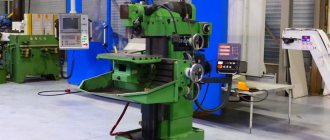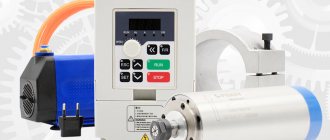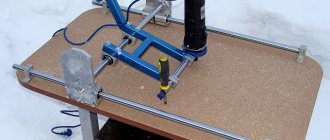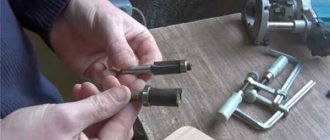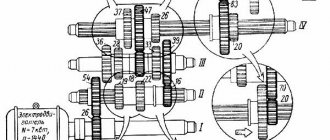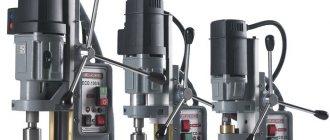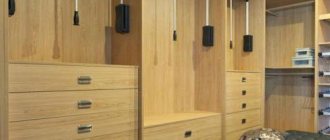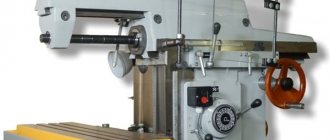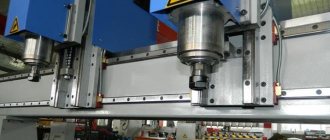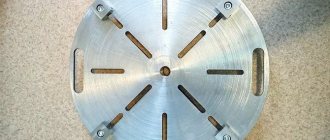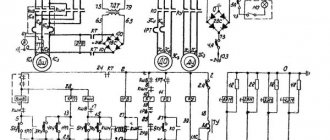Types of wooden blanks. Classification and features of raw materials:
Wood is considered a convenient and practical material. But if you delve deeper into the technology, it turns out that choosing the right material is much more difficult than it seems. It depends on the 3D model, the structure of the tree species, and other nuances.
The main classification of raw materials is based on the density of wood varieties:
- soft woods (aspen, linden);
- universal (birch, maple);
- hard varieties (beech, oak, mahogany);
- fibrous species (pine, spruce and other conifers).
Another indicator that CNC machine operators always pay attention to is the moisture content of the raw materials. Some varieties are naturally juicy and difficult to dry. Others may be too wet due to improper storage. Even blanks made from the same type of wood can have different humidity levels, which will affect the final result.
Different types of wood differ in:
- color;
- pattern and texture;
- density and ability to split (grindiness).
The result of a CNC machine is even influenced by such factors as the age of the tree (this parameter is especially important for deciduous trees) and the place where it grows.
Demand and competition analysis
The final success of the project depends on how correctly you identify the target audience. Study the needs of the population of your city. Find out what exactly customers value in finished products. For example, if a client orders furniture, the ability to fit it into a thoughtful interior is usually important to him.
If there are many suburban villages in your region, consider the concept of producing stairs, wooden doors and windows. They are installed in private cottages more often than metal-plastic structures.
Find out how many similar workshops are operating in the region, providing similar services. Look at what they do, what they offer to clients and at what prices, what machines they use.
Note! In addition to wood, automatically controlled milling machines work with other materials:
- leather;
- hard types of plastic;
- fiber boards.
This allows you to produce more products and expand the circle of potential customers.
Next steps Read also how to make money from welding.
How to choose a workpiece:
Each grade has characteristics that must be taken into account if you plan to mill the product on a machine. When a master cuts with a hand tool, he feels the force of pressure and can change the pattern in the process if the workpiece requires it. The machine is unable to stop to think and suggest another cutting method to the operator. He simply does his work on wood, prescribed by a loaded program with a certain 3D model for CNC, plunging to different depths into the material and removing the required amount of chips.
Here are the basic principles for choosing material:
- A preliminary assessment of the 3D model is desirable: are there many small patterns, what will the product be used for, what load should it withstand;
- It is important to remember that hard types of wood are preferred for a CNC machine. Oak, beech, maple and ash are considered universal. It is difficult to cut small patterns out of these rocks by hand, but the sharp cutters of the machine cope with this perfectly. As a result, the finished product will truly be of high quality and durable;
- practice shows that among the budget options, birch is best suited for the machine, and among more expensive ones, beech, oak, ash or pine. They do not lint, easily withstand the impact of a milling cutter and require virtually no manual modification, and also allow you to turn almost any designer’s ideas into reality.
Room
The ideal location for installing the machine is next to a construction supermarket or market. Choose industrial areas and non-residential buildings, because the equipment makes noise. In residential areas, problems with neighbors are inevitable.
If you plan to work independently, a garage is quite suitable - it can easily accommodate a machine and tools.
To open a full-fledged workshop, rent a room that meets the requirements of regulatory authorities and has all the necessary communications:
- water pipes;
- sewerage;
- heating;
- ventilation;
- high-quality electrical wiring;
- internal and external lighting.
Note! Damp, cold rooms are not suitable for installing a CNC machine. In such conditions, the equipment will quickly become unusable.
Features of choosing a 3D model for a CNC wood cutting machine:
Virtual models are a digital image of a future product, with the help of which milling equipment builds a program. They are:
- simple ones, which can be used to cut furniture parts;
- complex - with drawings and patterns for application to facades and surfaces (in 2d and 3d format - i.e. flat or convex);
- completely three-dimensional - for example, figurines and three-dimensional sculptures, carved columns and original balusters, etc.
The choice of raw materials largely depends on the model. For a CNC machine for wood, you can also use MDF - wood fibers glued and molded using special equipment. This material is suitable for the simplest ideas: wall panels, cabinet fronts, countertops, etc. MDF can be used when you plan to apply a simple three-dimensional design and then cover the workpiece with varnish or paint. Finishing in this case is not only beauty, but also the wear resistance of the future product.
The least suitable for complex milling are laminated chipboards and chipboards. When using these materials, choose two-dimensional flat models.
To manufacture complex products using 3D models for CNC woodworking, skills and knowledge are required. MDF is not suitable because it does not have the necessary safety margin. A three-dimensional image planned in a layout cannot be applied to a surface that is not intended for this. Usually, for sculptures and bas-reliefs, an experienced master chooses those types of solid wood that are convenient for him to work with.
Earning money from engraving work
Another quite promising way to make money on CNC equipment is to carry out engraving work on the surface of precious metals. This could be the production of certain inscriptions or images on rings, the production of gift medallions and medals, branded inscriptions on lighters, cigarette cases, flasks and similar products.
To perform such work with CNC equipment, which can provide very good income, you only need to have a CNC engraving machine, as well as a computer with the appropriate software.
What can be made from solid wood?
Wood is a timeless material, fashionable and relevant in our time. At the same time, it is durable compared to plastic, but quite light compared to metals and stones. Easily amenable to processing, painting, artificial aging, restoration. All this determines its popularity and widespread use.
Absolutely all 3D models presented in our online store are suitable for production on a woodworking machine. All of them are made in stl format, readable by any suitable programs. So feel free to choose any one and create!
Search for clients
Start looking for customers in advance. Use the power of the Internet:
- social networks - make your own page, tell us what you plan to do, write prices, publish photos;
- Your own website is an effective but expensive tool for promoting a service. Start creating it when you get your first profit;
- produce printed materials - business cards, price lists. Give them out in public places. Agree with the administration of construction stores - for a small fee or a percentage of sales, they can distribute business cards with your advertising to their customers;
- make a list of potential partners - enterprises in the region that would be interested in your products. Send commercial offers regularly. Meet with leaders in person. If you manage to conclude 2-3 long-term contracts, you will not face bankruptcy;
- take part in exhibitions and fairs in the city, present your products there - lucrative contracts are often concluded at such events.
Processing edges with a router at home
Another task that can be done with a hand router is processing the edges of wooden blanks at home. For this purpose, special templates are used - reliable help for beginners and inexperienced professionals. A pre-processed board or other flat object is usually used as a template.
Rule! The length of the template must be greater than that of the workpiece being processed, both before and after milling. This way you can avoid unevenness at the beginning and end of the edge.
Edge milling
To process edges with a router at home, use straight edge cutters with a support bearing. The thickness of the template should not be greater than the gap between the bearing and the cutting head.
Edges with curved lines
One of the most complex types of home crafts is wooden blanks with curved edges. Additionally, a template with a thrust ring is required - this is a special device in the form of a round plate with sides. It makes movements along the template, which gives the desired trajectory to the cutting cutter.
A round plate with sides is screwed to the base of the milling machine using bolts. The template itself is secured to the working surface with strong tape or clamped with clamps. Only after this can you turn on the milling machine engine. Using special templates, you can make completely identical parts with curved edges.
Performing curved sharpening of edges
The length of the cutting plane is greater than the width of the workpiece
If the workpiece is narrower than the length of the cutting part of the cutter, edge processing takes place in the following order:
- A flat template is attached to a desktop or other surface.
- The cutter is installed so that the roller moves along the template, and the cutting plane moves along the workpiece.
- The cutter is placed in working position and clamped.
- Turn on the router and move it along the template. The rotation speed of the cutter depends on the depth of processing: the deeper, the lower the speed you should work.
- After the first full pass through the milled part, it is worth pausing work and assessing the quality of processing by eye. If you are satisfied, the craft can be released from the clamping clamps. Otherwise, it’s worth making another pass with the cutter.
The method is suitable for making quarters along the entire edge or in a separate area. If you install a shaped cutter, adjust the guide and use a stop, then with a long cutting attachment you can make a longitudinal shaped pattern on a wooden workpiece.
Quarter
The length of the cutting plane is less than the width of the workpiece
When the width of the workpiece exceeds the length of the cutting part of the cutter, work as follows:
- An even template is installed and secured, and the first pass of the cutter is made along the workpiece.
- After the first pass, the template must be removed. For the second pass, the processed edge will serve as a template. The bearing of the milling attachment is guided along it. If the length of the cutting plane is still not enough for full processing, you need to make an additional pass.
- At the final stage of processing, the workpiece is turned upside down, secured with clamps, and an attachment with a bearing at the end is installed on the milling machine. It moves along the already processed surface, and the cutting plane of the cutter finishes the remaining sections of the edge.
Curly edges
Before giving the edge of a wooden part a curly shape, you need to carefully inspect it. Any unevenness and roughness require leveling, since the roller will give the cutter an incorrect trajectory, which will affect the quality of the work. Only after preliminary alignment of the edges can you begin the planned task using shaped cutters.
If the original surface is so curved that it is not possible to completely eliminate it, you cannot do without the help of a template. A rectangle is cut out of a plywood sheet up to 10 mm thick using a jigsaw. Along the edge of the template, a pattern designed for a curly edge is applied. Using a hand router, the edge of the template is perfectly sharpened to fit the desired pattern.
At the first stage of milling the workpiece, a template is not required - so-called rough processing is done. Only then is the template installed and the edge is milled to the required appearance. In areas where there is a lot of wood to be removed, the help of a jigsaw will not be superfluous.
Figure milling
Possible business problems and risks
Here are the most common mistakes new entrepreneurs make:
- Haste. Do not rush to invest additional funds in the project as soon as the financial situation stabilizes and the first profit appears. It is believed that modernization and expansion of capacity will increase profitability and income for the owner, but this is not always the case. It only makes sense to expand if you have established sales channels. Initially, it is better to invest available funds in improving the quality of products, increasing their range, training employees, contacting specialists and ordering effective advertising.
- Wrong choice of niche - experiment with different types of products, learn to quickly switch and change the range.
- Competition - in an unequal struggle with other workshops, half of new projects are closed without working for even a year. To avoid being one of them, look for your competitive advantages.
- Incorrect assessment of financial indicators. Entrepreneurs who are just trying their hand at small business often make mistakes like this.
- No standing orders. If you want constant work, focus not on individual clients, but on production enterprises. Please note that the search for distribution channels should be done at the planning stage
Scope of application of wood milling service
CNC wood milling is used in a wide variety of fields. Most often, wood milling
CNC processing is used in the manufacture of furniture and decoration of premises. The CNC machine carries out high-precision curved milling of wood. For example, using CNC you can make carved furniture, mill round tabletops, custom artistic furniture elements, mill holes of various shapes, make furniture “without nails” (puzzle furniture) and parametric furniture. CNC machines produce matrices and templates for furniture production.
CNC milling of wood is used in the manufacture of various interior elements: decorative grilles and partitions, carved panels and panels, wall decorations.
One of the areas of CNC wood processing is the milling of artistic parquet, rosettes and borders. Using CNC wood milling, you can create any design or even a painting on the floor. In this case, the main parquet material (for example, oak) is “encrusted” with inserts from exotic parquet species, heat-treated wood or wood of lighter colors.
